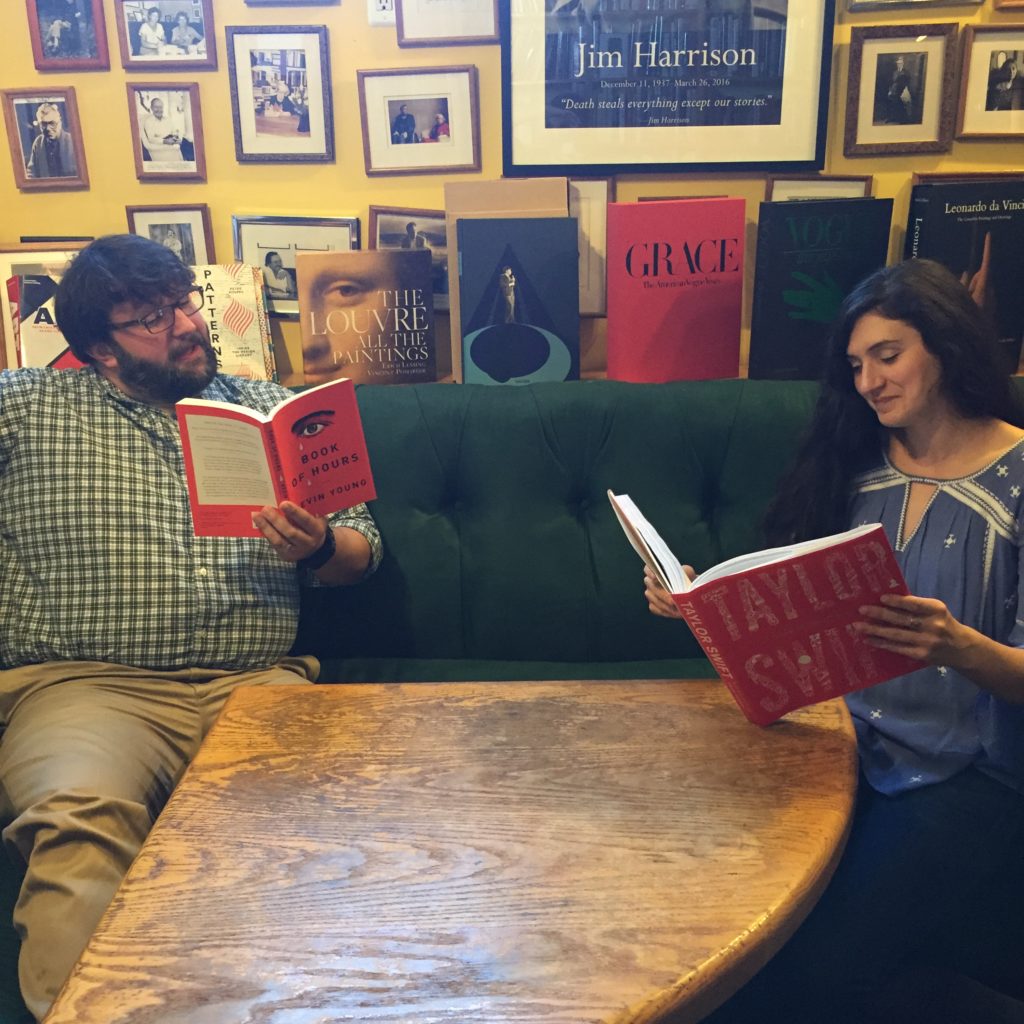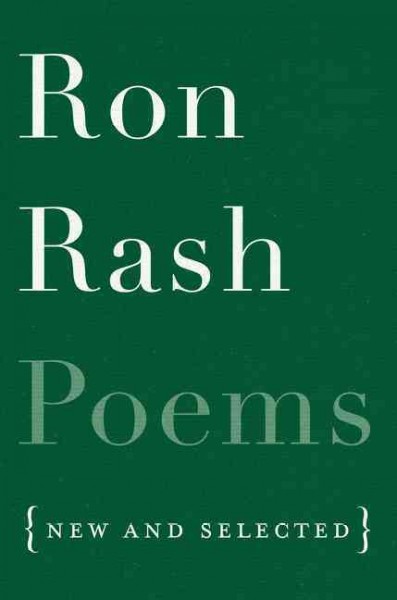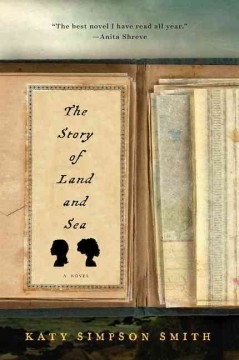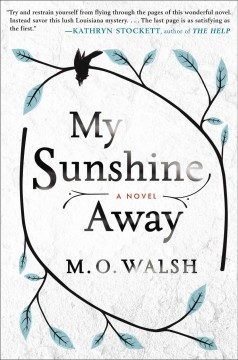Last weekend, I was in the store buying some gifts with my 5-year-old, and as is tradition, he and I sat at the booth and read. Sometimes I buy a book for him, and sometimes I don’t, but we always sit at the booth and go through a children’s book together.
On the Sunday in question, he picked out the mind-tingling Shark vs. Train by Chris Barton and Tom Lichtenheld. It was, as you can imagine, a goofball kids book. I really like Lichtenheld’s illustrations (he drew a favorite, Goodnight, Goodnight, Construction Site) and the story that Barton has made in Shark vs. Train is a wonderful game of speculation and silliness.
But was it okay to read this on the table in the back corner of the store?

I love that table. Its finish has been worn from the sliding of thousands of books over its surface. It’s where our visiting authors cozy up to put their autographs in our stock; it’s where customers get a chance to meet that writer, share a quick story, and get a note jotted for themselves on the title page. Signed books make great gifts: a former student of mine is currently whooping leukemia’s butt, and her husband got Greg Iles’ The Bone Tree for her to read while taking her chemo. The note Greg wrote was heartfelt and sincere, the value of the book surpassing the mere monetary price.
Pulitzer Prize winners have signed on this table, our beloved Ms. Welty being one of them. Authors at the beginning of their careers or those who have had lifetimes of publishing have sat in the booth alike. Jerks and angels; hometown heroes or folks whose first visit to Jackson has been to sign; authors who are still among us, and those who have passed on. Writers who have signed books. Writers who have touched souls.
So is this table (altar?) really the right place to read books about sharks and trains?
Yes.
Undeniably, yes.
Because reading is so important, it doesn’t always matter what is being read. The distinction between high-brow and popular literature is one that I’m aware of, but also one that I don’t mind crossing. I love Shakespeare and John Milton, but I’ll never forget the joy of the Little Golden Book The Color Kittens and the cool, calm that washed over me when hearing the lines “Green as cat’s eyes. Green as grass by streams of water as green as glass.” Hamlet belongs on the same shelf as The Color Kittens. That table will hold memories and majesty just as easily as simple children’s picture books.
So come, sit a while. Read something at that table. You’ll fit right in.



 First off, the description of the night being a “black tarp” that’s held in place by stars is simply genius. Trust me: this will affect the way you look at the night’s sky from now on. And the way the poem shifts its (and our) focus from the sky to the lake in which this unnamed man is flinging his fishing net feels natural. This sky/lake relationship is maintained at the poem’s close when, as the threadfin fish slip out of the seine net, the lake is compared to a mirror that reminds us of “when/ this deep water was a sky.”
First off, the description of the night being a “black tarp” that’s held in place by stars is simply genius. Trust me: this will affect the way you look at the night’s sky from now on. And the way the poem shifts its (and our) focus from the sky to the lake in which this unnamed man is flinging his fishing net feels natural. This sky/lake relationship is maintained at the poem’s close when, as the threadfin fish slip out of the seine net, the lake is compared to a mirror that reminds us of “when/ this deep water was a sky.” How long have you worked at Lemuria? Two Years this January.
How long have you worked at Lemuria? Two Years this January.


